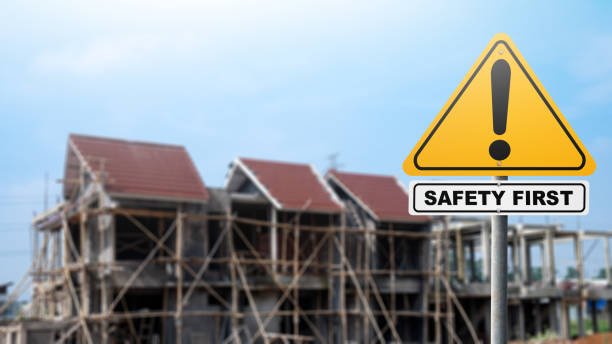Importance of a Strong Foundation in Home Building

Building a home is one of the most significant investments a person can make. It’s not just about creating a space to live in but constructing a place that will stand the test of time. At the core of any well-built home is a strong foundation—the fundamental structure that everything else relies upon. Without a solid foundation, even the most beautifully designed house will eventually show signs of wear and tear. The importance of a well-constructed foundation goes far beyond simple structural integrity; it ensures safety, durability, and long-term value for homeowners.
Why is a Strong Foundation Essential?
The term strong foundation refers to more than just concrete poured into a hole in the ground. It embodies the precision and care taken to ensure that the base of your home will support the entire structure. A properly designed foundation distributes the weight of the house evenly, preventing uneven settling, cracking, or shifting over time. This is especially important in areas with fluctuating temperatures or soil types, where improper foundation work can lead to costly repairs down the line.
When a foundation is solid, it provides several key benefits:
- Prevents Structural Issues: A strong foundation ensures that the house remains stable, reducing the risk of cracks in walls, doors not closing properly, and other common problems.
- Moisture Resistance: A well-built foundation can resist water infiltration, preventing basement flooding or moisture damage to the home’s interior.
- Energy Efficiency: By providing a tight, stable base, a strong foundation can also contribute to better insulation and energy efficiency, saving on heating and cooling costs.
Components of a Strong Foundation
The materials and techniques used in foundation construction are crucial to ensuring long-term stability. Typically, foundations are made from concrete, steel reinforcements, and, in some cases, specialized waterproofing materials. However, it’s not just about the materials used—it’s about how they are applied and the local environment they must withstand.
- Soil Testing and Preparation
The first step to a strong foundation is soil testing. Different types of soil react differently to moisture, temperature changes, and the weight of the building. In some cases, additional excavation or the use of specific materials is necessary to ensure stability. - Footings and Reinforcements
Footings are an essential part of any foundation, providing the necessary support to hold up the structure. These are often reinforced with steel to ensure they can handle the load of the house, as well as any shifting in the soil over time. - Moisture Control
Controlling moisture is key to preventing structural issues in the future. A foundation built without proper drainage and waterproofing measures can lead to problems such as mold, mildew, and even major water damage in basements or lower levels.
Role of Custom Home Builders in Creating Strong Foundations
One of the most important aspects of home building is choosing the right contractor. Custom home builders in Markdale understand the unique demands of the local climate and soil conditions, which are essential factors in laying a strong foundation. They are well-versed in the proper techniques, from soil testing to reinforcement, ensuring that your home is built to last. Whether it’s a new build or a renovation, working with skilled professionals ensures the quality and longevity of the foundation, ultimately protecting your investment.
Types of Home Foundations
There are several types of home foundations, each with its pros and cons depending on the region, climate, and the home’s design. The three most common types are slab foundations, crawl spaces, and basements.
- Slab Foundations
Slab foundations are one of the simplest and most cost-effective types. A large, single layer of concrete is poured directly onto the ground, providing a solid, level base. This type of foundation is ideal for warm climates where the ground does not freeze, but it can be less effective in colder areas due to the risk of frost heave. - Crawl Spaces
A crawl space foundation elevates the home off the ground, leaving a small area beneath the house for utilities and air circulation. Crawl spaces are often used in areas with moisture issues, as they provide a buffer zone that helps keep the house dry. - Basements
A basement foundation is the most complex and costly but provides extra living or storage space. Basements are common in colder climates, as they offer protection from frost heave and can contribute to better insulation for the home.
Long-Term Benefits of a Strong Foundation
When you invest in a home with a strong foundation, you’re investing in the future of the property. Over time, homes with solid foundations experience fewer structural issues, meaning fewer repairs and maintenance costs. In addition, a well-constructed foundation can increase the overall value of the home, making it a more attractive option to potential buyers should you decide to sell.
Moreover, a home with a robust foundation contributes to peace of mind. Knowing that your house is built on a solid base ensures the safety and comfort of your family. You can focus on other aspects of homeownership—design, decor, landscaping—without worrying about potential foundational issues arising in the future.
Summary
In the world of home building, the foundation is everything. It supports the structure, keeps it safe from environmental factors, and plays a critical role in the long-term stability and value of the property. Whether you’re building a new custom home or renovating an existing one, ensuring that your foundation is strong is paramount. Always work with experienced professionals, such as Custom Home Builders , who understand the intricacies of foundation construction and are committed to delivering quality results. A strong foundation isn’t just the base of your home; it’s the bedrock of your investment and future.






